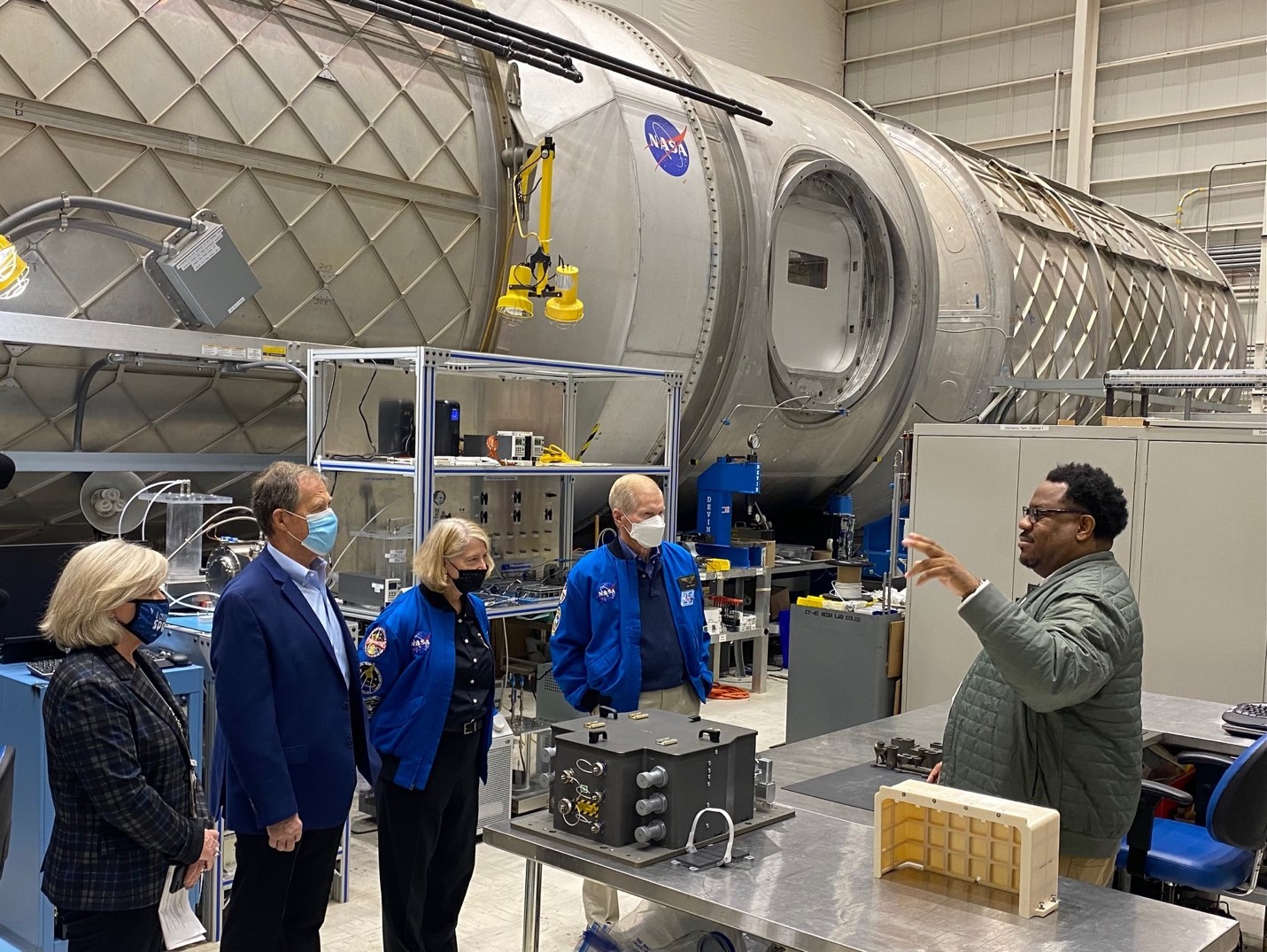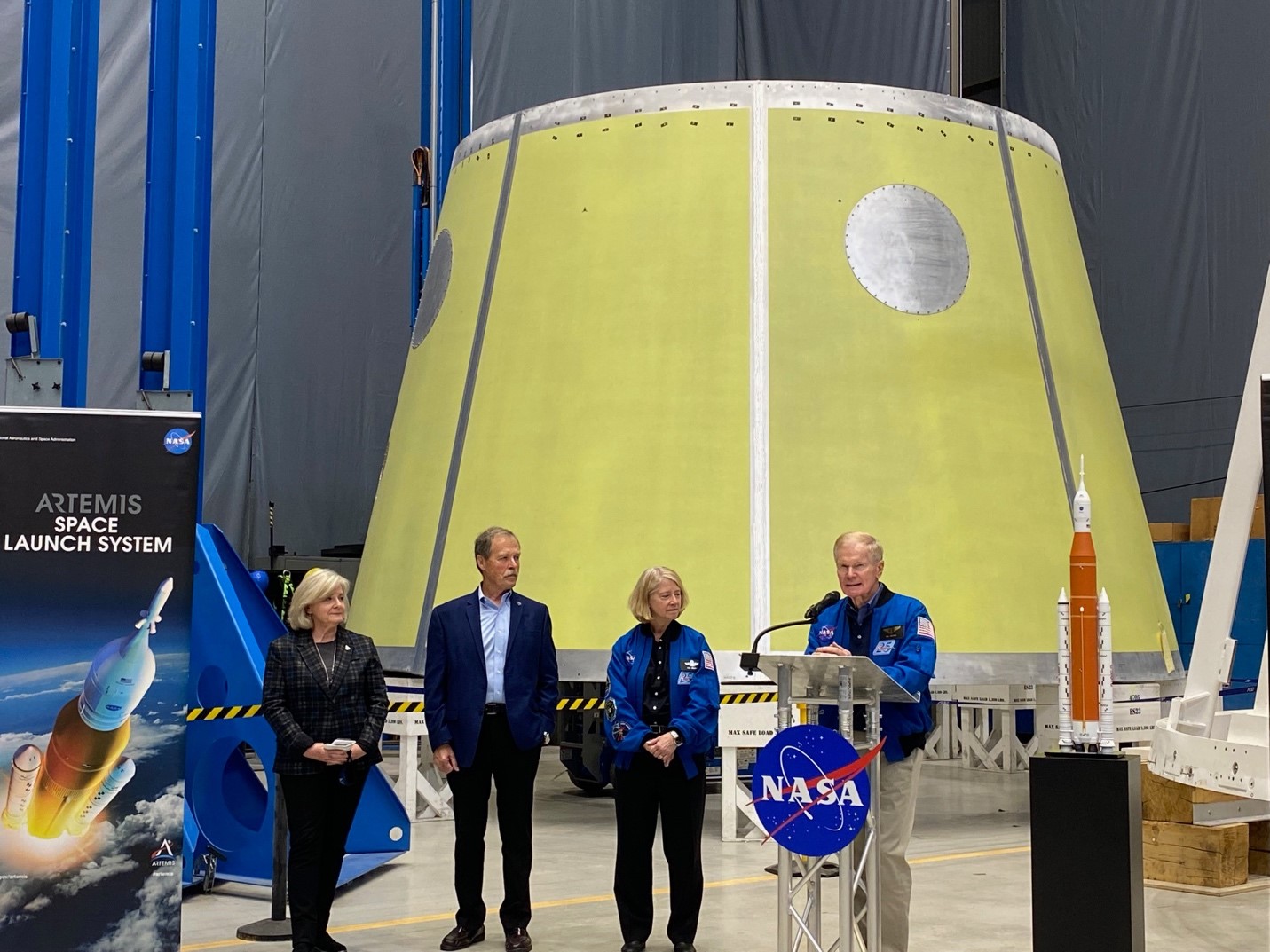By Wayne Smith
NASA Administrator Bill Nelson and Deputy Administrator Pam Melroy visited the agency’s Marshall Space Flight Center in Huntsville on Nov. 29 and 30 for tours and briefings on Marshall’s role in the Artemis program and other capabilities that enrich many facets of the nation’s space exploration endeavors.

It was their first visit to Marshall in their current roles.
Nelson and Melroy visited Marshall’s Surface and Transit Habitats Environmental Control and Life Support Systems, and Advanced Manufacturing for large space structures facilities. Marshall’s capabilities in advanced manufacturing, in-space transportation, habitats, and life support systems have enabled our nation’s human exploration systems for decades.
“Is it any wonder that NASA has been voted the best place to work in the federal government for the last nine years straight? You can see it in the gleam in the eye, beyond the mask, of all of these people who have talked to us today,” said Nelson, who was sworn in as NASA’s 14th administrator in May and tasked with carrying out the Biden administration’s vision for the agency. “You have a very special part in our nation’s history and in our nation’s space program.

“It’s not the Apollo generation. It’s the Artemis Generation, and you have seen a lot of that generation here today in this briefing. It’s going to be extraordinary, what we’re doing, and we’re just talking about a small part of NASA.”
Marshall has a vital role in planned Artemis missions and manages NASA’s deep space rocket, the Space Launch System (SLS), which will power the next generation of exploration. NASA’s Orion spacecraft is secured atop the powerful SLS rocket at the agency’s Kennedy Space Center in Florida, and the integrated system is entering the final phase of preparations for an upcoming uncrewed flight test around the Moon. The mission will pave the way for a future flight test with crew before NASA establishes a regular cadence of more complex missions with astronauts on and around the Moon under Artemis.
Nelson and Melroy also highlighted the benefits that both NASA and Marshall would receive under President Biden’s Build Back Better Act, including major infrastructure improvements, modernizing critical Marshall resources currently supporting priority programs and projects across the agency, including the agency’s Artemis, the International Space Station, commercial crew, and technology development and science efforts.
Melroy said she visited Marshall many times when she was an astronaut working on hardware for the International Space Station. She said Marshall is “an amazing place.”
“I think one of the things that’s really exciting is just to realize that it takes so much effort to build a brand new rocket, especially one that is going to be the most powerful rocket ever designed,” Melroy said. “It’s important to recognize the key difference between what we did with Apollo, which was very primitive technology by comparison, was to prove that we could go to the Moon and come back.
“This time around, we’re going to stay. Marshall is playing a crucial role in that.”
Marshall Director Jody Singer said Nelson and Melroy were impressed with the work and expertise at the center.
“Marshall has a proud legacy in space exploration, and we will build on that with future missions,” Singer said. “We’re thrilled that NASA leadership had the opportunity to see ongoing work and developments at Marshall supporting programs across the agency.”
For more on Marshall Space Flight Center, visit
























